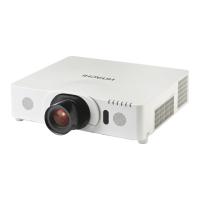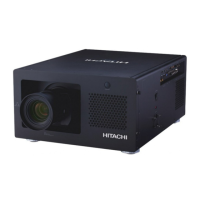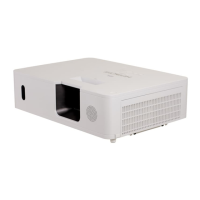Troubleshooting
Phenomena that may be easy to be mistaken for machine defects (continued)
Phenomenon Cases not involving a machine defect
Reference
page
Sound does not
come out.
(continued)
The mode selected for HDMI AUDIO is not suitable.
Check each of the two modes provided and select the
suitable one for your HDMI
TM
audio device.
56
The Sound button (♪) or checkbox is disabled.
If you have selected USB TYPE A, turn the sound on from
the Thumbnail menu.
If you have selected USB TYPE B, remove the check
mark from the Sound checkbox in the Options window of
“LiveViewer Lite for USB”.
If you have selected LAN, remove the check mark from the
Sound checkbox in the Option menu of “LiveViewer”.
95, 110
No pictures are
displayed.
The signal cables are not correctly connected.
Correctly connect the connection cables.
10 ~ 14
The brightness is adjusted to an extremely low level.
Adjust BRIGHTNESS to a higher level using the menu
function.
42
The computer cannot detect the projector as a plug
and play monitor.
Make sure that the computer can detect a plug and play
monitor using another plug and play monitor.
10
The lens shade is closed.
Check whether the SHADE indicator is blinking. If it is
blinking, press SHADE button on the control panel.
36
The USB TYPE B port is selected as the picture input
source even if MOUSE is selected for USB TYPE B.
Select USB DISPLAY for USB TYPE B in OPTION menu to
project the picture input to the port. Otherwise select other
port for picture input.
65
The projector does not recognize the USB storage
device inserted into USB TYPE A ports.
Use the REMOVE USB function rst, remove the USB
storage device, and then insert it into the port again.
Before removing the USB storage device, be sure to use
the REMOVE USB function on the Thumbnail screen, which
appears when the USB TYPE A is selected as the input
source.
12, 95
(continued on next page)

